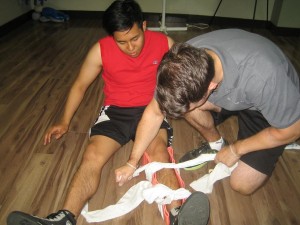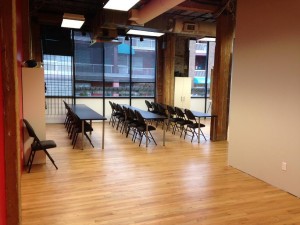Advanced CPR training has become very popular in the United States over the past several years. Before, advanced CPR training was only offered by hospitals and health care facilities but not anymore. There are numerous training facilities and providers all over the country today, offering top quality training in CPR, AED, and first aid. With our training providers, you can enroll in a high quality program for very affordable rates!
Our training providers can be found in the following states and their respective cities:
- California – Los Angeles, San Francisco
- Hawaii – Honolulu
- Nevada – Las Vegas
- Oregon – Portland
- Washington – Seattle
Just add the word CPR to the end of each city name and you’ll get the name our provider in that location!
Ventilation in Adults

The general rule when it comes to compressions in ventilation is this: If you are untrained or are not confident in giving rescue breaths, don’t. Hands-on CPR (chest compressions only) is enough to help a victim of cardiac arrest in an emergency. However, ventilation is an important part of CPR when the victim exhibits lack of or irregular breathing. In children, ventilations are as important as compressions because cardiac arrests in children are typically caused by a respiratory problem (hence the term “asphyxial arrest”).
Endotracheal tube insertion
In advanced cardiac arrest management, the insertion of endotracheal tubes is a common occurence to ensure adequate ventilation of the patient. An ET tube is inserted through the mouth until the junction of the airway that divides into the left and right lung. The tube makes sure that each breath given using a bag valve mask is reaching the lungs – in short providing a clear path from the mouth to the lungs.
The health care team checks the ET tube placement by giving one breath and looking for a chest rise and fall. Ideally, once the patient is stable, the placement is further checked through an x-ray or measuring cardon dioxide output from the tube.
Remember:
- Compression and ventilation ratio is 30:2.
- In an ideal set up, there are two rescuers – one giving compressions and the other giving rescue breaths.
- When giving mouth-to-mouth rescue breaths, use a barrier device if available.
- Bag valve masks should be squeezed completely and allowed to reinflate in between pumps.
Training program in ACLS

Our ACLS program is a two-day course. It runs over several sessions in two days, totaling into 16 hour classes. Re-certification is offered for this program as well; it is shorter, taking only 5 to 6 hours. An ACLS program will cover advanced skills and techniques in CPR, such as medication administration.
Note: ACLS certificates expire 2 years after being issues, but can be renewed through a re-certification class (given that they aren’t expired yet). A trainee with an expired certificate has to retake the course instead of a re-certification class.
